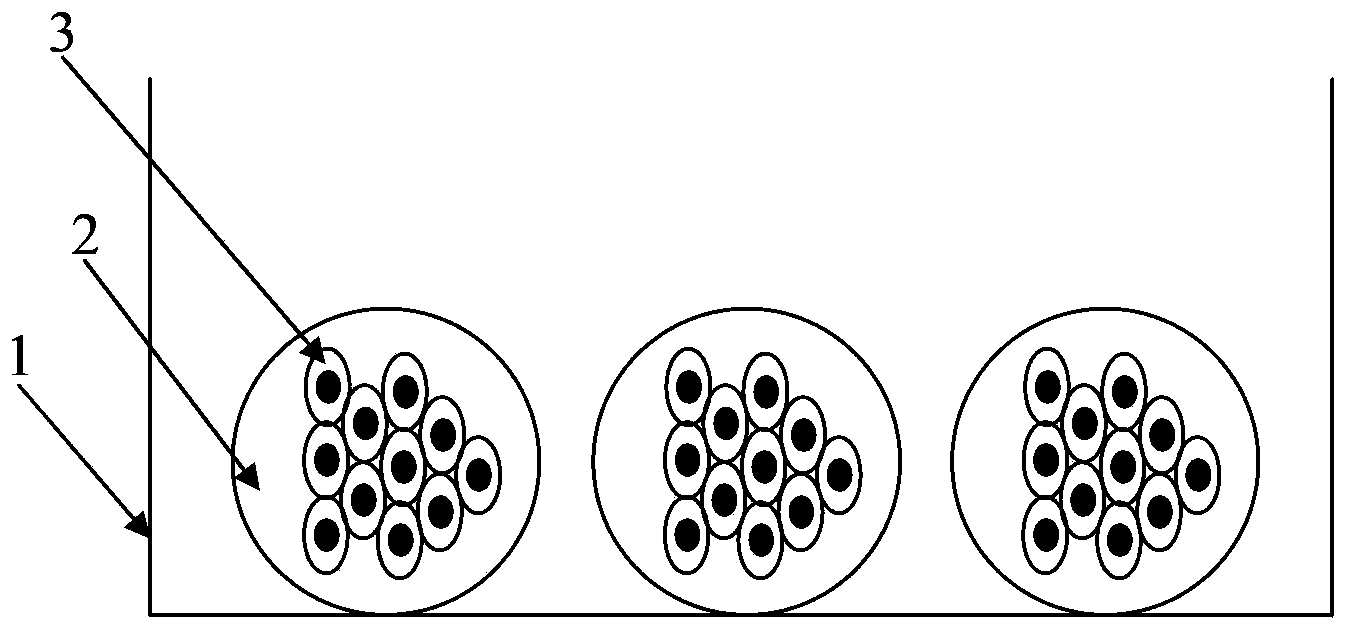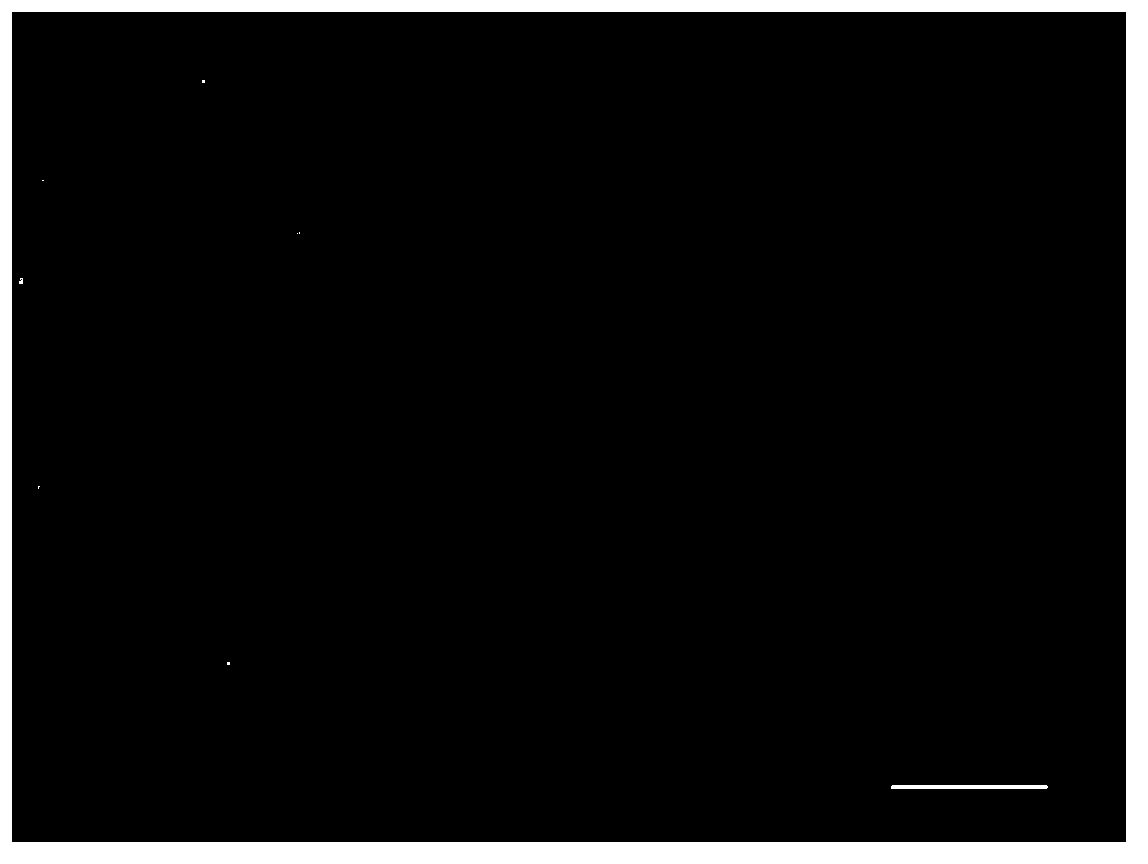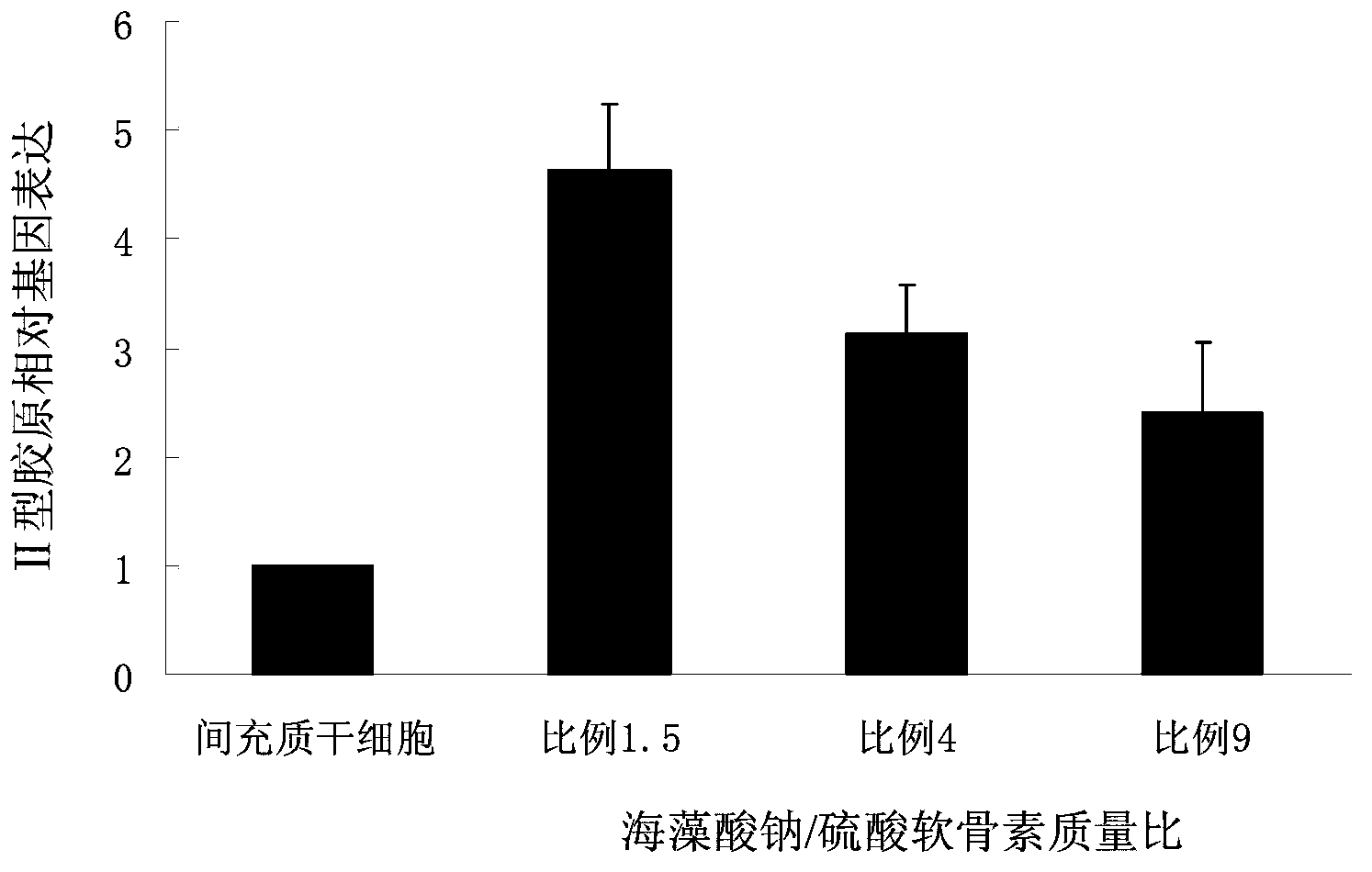Method for adjusting and controlling in vitro three-dimensional directed differentiation of stem cells
A technology of directional differentiation and stem cells, which is applied in the field of regenerative medicine, can solve the problems of unfavorable cell culture and tissue repair of degradation products, lack of special extracellular matrix components that promote differentiation, and cells do not have normal physiological functions in vivo, so as to achieve induction efficiency and Improved cell function, low cost, improved differentiation efficiency and functional effects
- Summary
- Abstract
- Description
- Claims
- Application Information
AI Technical Summary
Problems solved by technology
Method used
Image
Examples
Embodiment 1
[0026] Example 1: Three-dimensional induction system regulates the directional differentiation of human mesenchymal stem cells into chondrocytes in vitro
[0027] Sodium alginate (molecular weight 430kDa, ratio of guluronic acid to mannuronic acid 1.5) powder was dissolved in physiological saline to obtain a 3% (W / V, g / ml) solution. Chondroitin sulfate (average molecular weight 20kDa) powder was dissolved in saline to obtain a 5% (W / V, g / ml) solution. Mix 3% (W / V, g / ml) sodium alginate, 5% (W / V, g / ml) chondroitin sulfate solution and normal saline to obtain a final concentration of sodium alginate of 2% (W / V , g / ml), the mixed solutions of sodium alginate / chondroitin sulfate mass ratios of 1.5, 4 and 9, respectively. The fifth generation human umbilical cord mesenchymal stem cells were mixed with the mixed solution, and the cell density was adjusted to 6×10 6 cells mL -1 , the cell suspension was dripped into 100mmol·L via a syringe pump -1 CaCl 2 Calcification in the sol...
Embodiment 2
[0028] Example 2: Three-dimensional induction system regulates the directional differentiation of human mesenchymal stem cells into neural precursor cells in vitro
[0029] First, arginyl-glycyl-aspartic acid (RGD) modified sodium alginate was prepared. Sodium alginate (molecular weight 500kDa, ratio of guluronic acid to mannuronic acid 2) was dissolved in 0.1M 2-(N-morpholino)ethanesulfonic acid (MES) buffer containing 0.5M NaCl (pH 6.5), to obtain 1% (W / V, g / ml) sodium alginate solution. Add 1-(3-dimethylaminopropyl)-3-ethylcarbodiimide (EDC), N-hydroxysulfosuccinimide (sulfo-NHS) and RGD polypeptide, and stir at room temperature for 24 hours. The molar ratio of EDC to sodium alginate is 1:20, the molar ratio of EDC to sulfo-NHS is 2:1, and the mass ratio of RGD polypeptide to sodium alginate is 1:1000. Then dialyzed and freeze-dried to obtain RGD-modified sodium alginate.
[0030] RGD modified sodium alginate powder was dissolved in saline to obtain a 3% (W / V, g / ml) solu...
PUM
| Property | Measurement | Unit |
|---|---|---|
| diameter | aaaaa | aaaaa |
| molecular weight | aaaaa | aaaaa |
| molecular weight | aaaaa | aaaaa |
Abstract
Description
Claims
Application Information
 Login to View More
Login to View More - R&D
- Intellectual Property
- Life Sciences
- Materials
- Tech Scout
- Unparalleled Data Quality
- Higher Quality Content
- 60% Fewer Hallucinations
Browse by: Latest US Patents, China's latest patents, Technical Efficacy Thesaurus, Application Domain, Technology Topic, Popular Technical Reports.
© 2025 PatSnap. All rights reserved.Legal|Privacy policy|Modern Slavery Act Transparency Statement|Sitemap|About US| Contact US: help@patsnap.com



